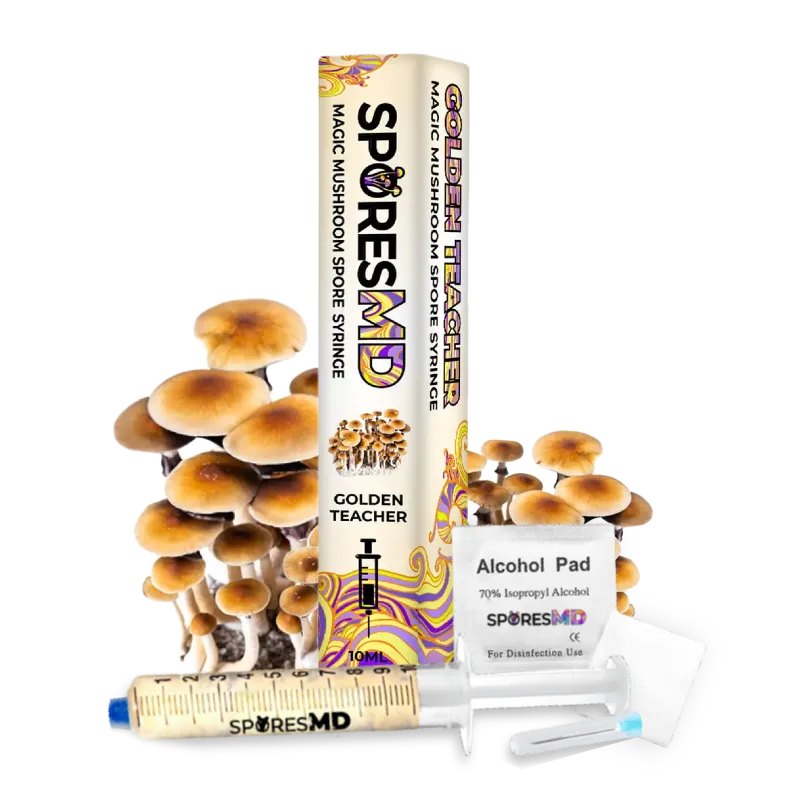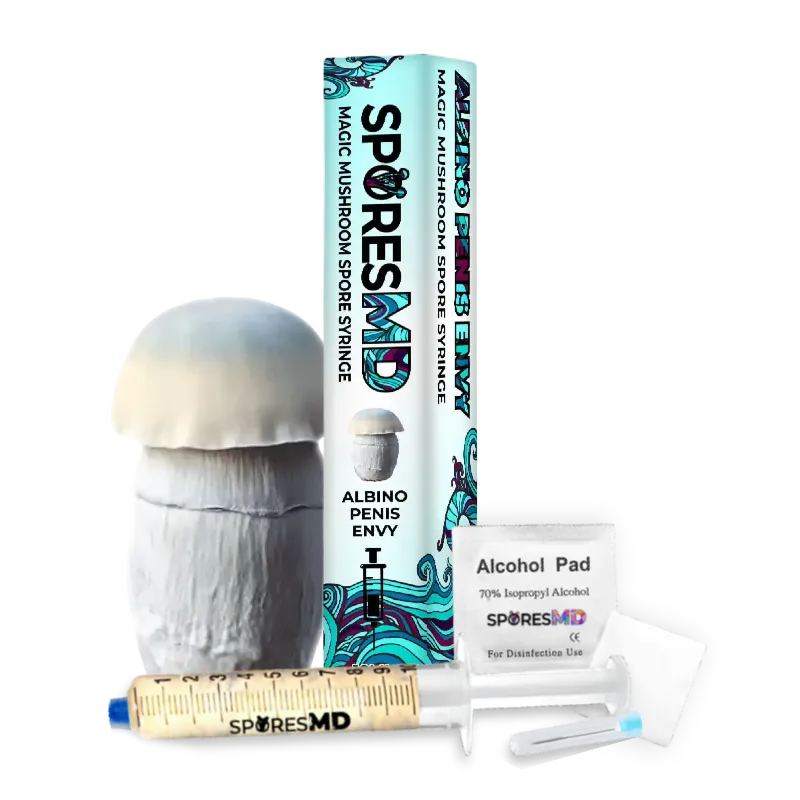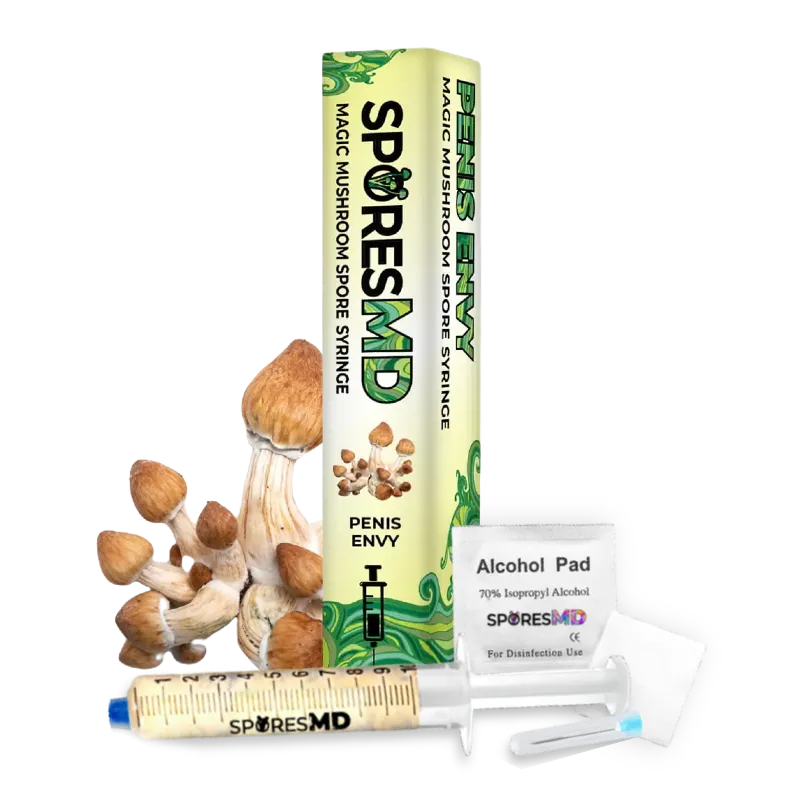Ever wondered about the journey of a mushroom from spore to full-grown fungi? It’s a marvel of nature. Mushroom spores, the fungi’s answer to plant seeds, play a crucial role in mushroom propagation. Found predominantly on the gill, these microscopic cells kickstart the mushroom lifecycle under optimal conditions.
However, it’s not just about scattering spores and hoping for the best. Mushroom cultivation requires understanding and precision. From choosing the right spore variety to knowing when to plant, every step is pivotal. And yes, not all mushrooms are edible, and they certainly don’t grow just anywhere. Ready to delve into the fascinating world of mushroom cultivation? Let’s start at the beginning – understanding when to plant mushroom spores.
Key Takeaways
- Mushroom spores play a vital role in fungi propagation and their cultivation requires understanding and precision. The process can be brought indoors with the right guidance.
- Choice of spore variety is significant and depends on personal preferences and ability to meet cultivation requirements. Mushroom substrate prep and sterile water also play crucial roles.
- Planting mushrooms indoors vs outdoors presents differences. Indoors, spore prints can be made for reintroduction to the cultivation cycle.
- Timing is of essence when planting mushroom spores. Factors like temperature, humidity, and light exposure are crucial to the success of cultivation. Most mushrooms favor a cooler climate, with a preferred temperature range between 55 and 75 degrees Fahrenheit.
- The best time to plant mushroom spores can depend on the type of mushroom being cultivated. Some prefer cooler temperatures (late winter to early spring) while others thrive in warmer climates (late spring to early summer).
- Successful mushroom cultivation requires attention to the growing environment, cleanliness and patience. Each mushroom species has unique requirements for temperature and humidity. Utilizing trusted spore suppliers such as SporesMD can yield fruitful results.
Importance of Mushroom Spores
Mushroom spores are vital to the propagation and diversity of fungi. Start your mushroom cultivation journey with these small, potent components. You’ll find it fascinating how these tiny beginnings can yield lush, full-grown mushrooms.
The variety you choose to start with impacts the intensity and success of the cultivation. P. cubensis, widely available at places like SporesMD, is a favored choice. It’s renowned for being uncomplicated to grow. But here’s the bottom line: selection relies on your preferences and the requirements you can meet.
Remember, growing mushrooms from spores is a combo of art and science. With a reliable guide, you can bring this process indoors, no matter your experience level. Produce fresh mushrooms right at home. How’s that for convenience?
Don’t overlook the mushroom substrate prep and the crucial role of sterile water, or skip the work and just get a pre-sterialized mushroom grow bag. Every step is significant, from using a spore syringe to understanding the unique environment needs of your mushroom variety.
Specifically, a controlled environment bears a profound difference against nature. In an outdoor setting, mushrooms freely release their spores. Indoors, though, you’ll find the spore print on paper. This print can scrape off, making spores ready for reintroduction to the cultivation cycle.
Whether you’re after oyster mushroom spawn or the Shiitake type, be ready for an eventful journey. Mushroom cultivation unravels as a curious path of constant learning and a sense of wonder about nature’s resilience.
Just imagine: you’re cultivating organisms that are among the most resilient and fascinating on our planet. Time to buy psilocybin spores and greet the world of fungi with open arms. You’re not just cultivating mushrooms, you’re joining a vibrant, diverse ecosystem.
In the realm of mushroom cultivation, specially featuring spores, there’s a promising exploration underway. With knowledge as the weapon, you see it’s more than just a process – it’s a way of interacting with nature. So, ready to take the plunge?
Types of Mushroom Spores
Every type of mushroom has its own unique spore. The trick is understanding what makes each one special. Now, let’s define these types of spores.
The most widely cultivated type of spore, especially for beginners, is the P. cubensis. It’s known for its ease of growth and widespread availability. And the best part? You can buy psilocybin spores from trusted sources like SporesMD.
Here’s the truth: Many people also experiment with different spore types, as there are a myriad of options. Some like the challenge of cultivating Shiitake or Oyster mushroom spores. Remember, the substrate (material for planting) varies with the type of mushroom spore you choose. This calls for meticulous research into each mushroom’s needs.
One surprising fact is that mushroom spores can be deadly. This emphasizes the importance of sourcing mushroom spores from reputable sellers that can confidently identify the type of mushroom. Always remember: NEVER collect spores from unknown sources.
So, what’s the bottom line here? You decide to delve deep into the alluring world of fungi. Get past the initial jitters and the uncertainty of starting something new. Whether you’re just dabbling with the idea or have prior experience, SporesMD is here to guide you, every step of the way.
Mushroom cultivation is an engaging journey. It’s about discovering the intricate processes of nature and translating it into practice. After exploring these mushroom spore types, you’re surely ready to embark on your mushroom cultivation adventure. Your resilience will guide you through, just like these strong, adaptive fungi. Sure seems exciting, doesn’t it?
Factors Affecting Spore Planting Time
Timing is crucial when it comes to planting mushroom spores. Various factors, like temperature, humidity, and light exposure, impact the success of your cultivation process.
The first consideration is temperature. Like all living organisms, mushrooms have a preferred temperature range. The majority of mushrooms favor a cooler climate, especially during the spawn run. Typically, try to maintain a temperature between 55 and 75 degrees Fahrenheit.
But here’s the thing, humidity also plays an integral role. Mushrooms need moisture to grow. Without adequate humidity, your mushrooms can potentially dry out before they’re fully mature. Aim for a humidity level between 80 to 95 percent.
Next, it’s important to consider their light exposure. Certain species, like the P. cubensis, require light to initiate the fruiting process. However, too much direct light can dry out mushroom caps and inhibit growth. It’s crucial to strike a balance in providing light exposure for optimal growth.
These considerations aren’t set in stone. Every mushroom species has different needs. It’s essential to research and understand the specific requirements of your chosen spore before you start cultivating.
With a bit of practice and continued learning, you’ll soon start seeing the fruits of your hard work. It’s not easy, but the learning experience can be as enriching as the harvest.
To delve further into mushroom cultivation, you may want to consider SporesMD as a reliable source. If you’re ready to take that step, you can buy psilocybin spores from a trusted provider and begin your mushroom cultivating journey. Remember, the best part? With proper care and the right conditions, you’ll have a successful yield and an amazing mushroom cultivation experience.
Best Time to Plant Mushroom Spores
If you’re itching to get your mushroom garden going, then timing is everything. But here’s the truth: there isn’t a one-size-fits-all answer. The timing often depends on the type of mushroom you’re planning to cultivate.
Your primary focus should be on creating the perfect growing conditions that we discussed earlier in this article; remember the temperature range of 55 to 75 degrees Fahrenheit and humidity level between 80 to 95 percent — these are crucial! Some mushrooms, like the shiitake, prefer cooler temperatures. For these, planting in late winter to early spring would provide a conducive growth environment. On the other hand, oyster mushrooms enjoy warmer climates, making late spring to early summer the ideal planting time.
Understandably, planning your mushroom garden might feel a bit daunting. But don’t worry, there are solid resources like SporesMD that can help you through your journey into the world of mushrooms. You can always turn to their page to buy psilocybin spores and for added assistance in carefully planning and executing your mushroom cultivation.
| Mushroom Type | Planting Season | |
|---|---|---|
| 1 | Shiitake | Late Winter – Early Spring |
| 2 | Oyster | Late Spring – Early Summer |
With your newfound knowledge and careful preparation, you’re well on your way to a successful mushroom garden. So what’s the bottom line here? While the timing is crucial, choosing the right time for planting mushroom spores depends primarily on the type of mushroom and your local climate conditions.
Tips for Successful Mushroom Cultivation
While understanding when to plant your mushroom spores is crucial, there’s a lot more to mushroom farming. That’s where we come in. Let’s dive right into some essential tips for successful mushroom cultivation.
To start off, pay strong attention to your mushroom’s environment. Your mushrooms’ living conditions play an important role in their growth. Each mushroom species has unique requirements for temperature and humidity. For example, a shiitake mushroom grower would want to maintain cooler temperatures, while an oyster mushroom farmer would need a warmer setting.
Cleanliness is another factor that just can’t be overlooked, so ensure your cultivation area is immaculate. This includes the immediate planting area, your tools, and even you. A small sterilizing step such as cleaning with rubbing alcohol can make a drastic difference in preventing unwanted contaminants.
Additionally, never underestimate the power of a reliable spore supplier. You want a trusted source where you can buy psilocybin spores, where quality and variety meet. Resources like SporesMD are shortcuts to a fruitful and efficient mushroom garden.
Here’s the truth: Patience is a virtue in mushroom farming. The process might seem slow, and there may be times when you second guess your gardening skills. However, the wait is often worthwhile as you’ll end up with a growing, healthy mushroom garden.
What’s the bottom line here? Mushroom cultivation is a science and an art, intertwined. Stick to the basics, but don’t be afraid to experiment and see what works best in your environment. Remember, every mushroom garden is a mini-ecosystem. By understanding and catering to this unique system, you’re well on your way to becoming a successful mushroom farmer.
Conclusion
So, you’ve learned it’s not just about when to plant your mushroom spores. It’s about creating the perfect conditions for your fungi to flourish. Remember the importance of temperature and humidity control. Keep things clean to avoid contamination and always source your spores from trusted suppliers like SporesMD. Patience is your best friend in this endeavor. Treat your mushroom cultivation like a fine craft, blending science and art. Finally, embrace the individuality of your mushroom garden. It’s your mini-ecosystem. Experiment, learn, and most importantly, stick to the basics. You’re well on your way to a successful mushroom harvest. Happy farming!

![A Comprehensive Guide: When and How to Plant Mushroom Spores [Essential Tips for Success]](https://sporesmd.com/wp-content/uploads/2024/04/4QDq3KJIz4X3gkAI4ILs_.jpeg)



